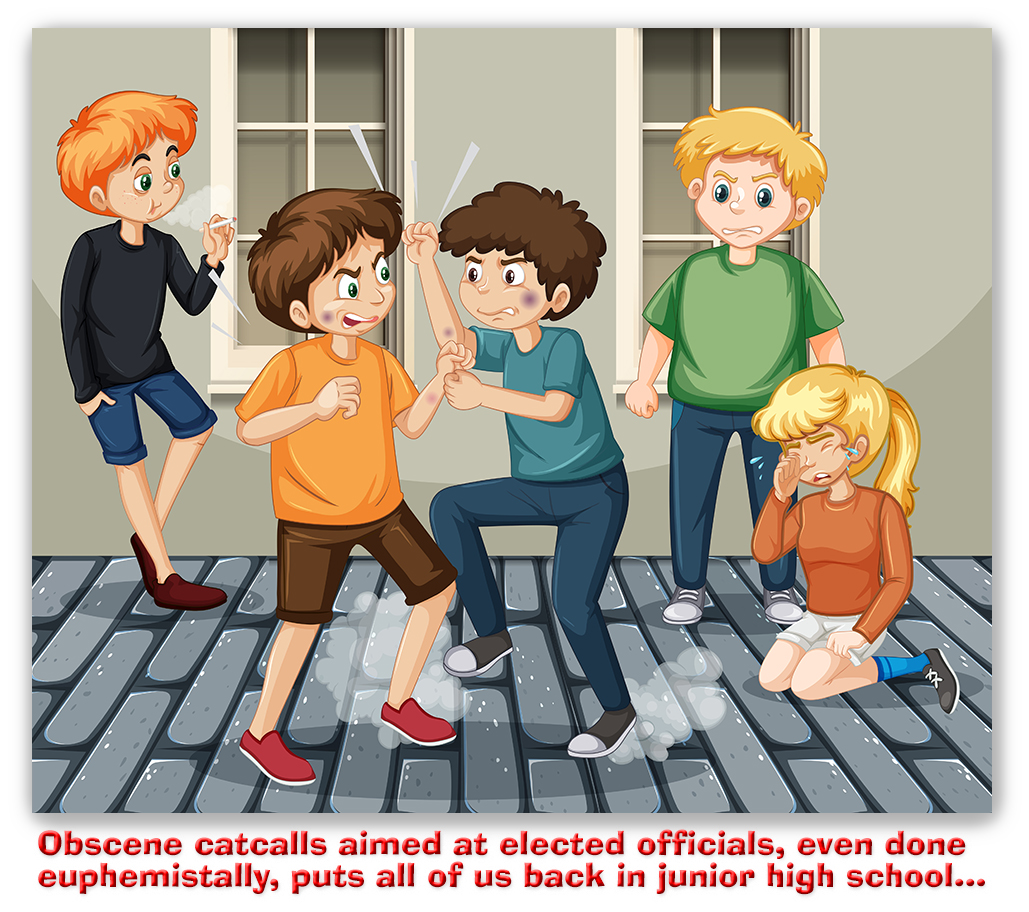We post news and comment on federal criminal justice issues, focused primarily on trial and post-conviction matters, legislative initiatives, and sentencing issues.

LET’S GO, BRANDON…
 I’m no fan of the current political meme “Let’s go, Brandon.” I think we can be critical of the incumbent President (or the former President, for that matter) without sounding like a lot of 7th-grade boys sitting in the back of the school bus.
I’m no fan of the current political meme “Let’s go, Brandon.” I think we can be critical of the incumbent President (or the former President, for that matter) without sounding like a lot of 7th-grade boys sitting in the back of the school bus.
But today, I mean it literally. Vermont-based Federal post-conviction attorney Brandon Sample (who has no connection with this blog other than the fact of his dedication to criminal defense and his skill in winning against sometimes-substantial opposition) swung for the fence on a First Circuit compassionate release appeal. Last week, he hit a walk-off homer.
Brandon’s client, Juan Ruvalcaba, was convicted of a sprawling drug-distribution conspiracy over 15 years ago and sentenced to life in prison. “Life” was the sentence that the 21 U.S.C. § 846 count required at that time because of Juan’s prior drug convictions.
In 2020, Juan asked his court for compassionate release under 18 U.S.C. § 3582(c)(1)(A)(i) because of COVID and his medical condition. He also argued that the fact that the mandatory minimum sentence for his drug conviction had been changed by the First Step Act – being dropped from life to 25 years – was an additional extraordinary and compelling reason for a sentence reduction.
 A § 3582(c)(1)(A)(i) motion, for those of you who just came in, requires that a moving party show that there is one or more “extraordinary and compelling reason[s]” for a sentence reduction, and that, after considering the sentencing factors of 18 U.S.C. § 3553(a), a reduction is warranted. Time was only the Bureau of Prisons could bring such motions on behalf of inmates – sort of like letting the fox decide which chickens in the henhouse would be released to go “free-range” – but First Step changed that to let inmates file for compassionate release on their own.
A § 3582(c)(1)(A)(i) motion, for those of you who just came in, requires that a moving party show that there is one or more “extraordinary and compelling reason[s]” for a sentence reduction, and that, after considering the sentencing factors of 18 U.S.C. § 3553(a), a reduction is warranted. Time was only the Bureau of Prisons could bring such motions on behalf of inmates – sort of like letting the fox decide which chickens in the henhouse would be released to go “free-range” – but First Step changed that to let inmates file for compassionate release on their own.
The Sentencing Commission has defined what facts may constitute “extraordinary and compelling” reasons in a Policy Statement (USSG §1B1.13). However, because the Commission has been out of business for lack of a quorum since First Step changed the compassionate release statute in December 2018, the Policy Statement is still written as though only the BOP director is doing all of the filing.
Juan’s district court disagreed that the First Step change to his mandatory minimum could be an extraordinary and compelling reason for compassionate release. What’s more, the court held that it was obligated to follow the Sentencing Commission Policy Statement, which did not identify sentence length or a subsequent non-retroactive change in the sentencing statute as elements justifying a sentence reduction.
Brandon took Juan’s appeal to the 1st Circuit, and last week, that court joined a majority of other federal courts of appeal in holding that § 1B1.13 does not apply to prisoner-filed compassionate release motions. What’s more, the 1st Circuit ruled that a district court was free to consider that the prisoner is serving an over-long sentence that would not be mandatory had it been imposed after the First Step Act.
“The text of the current policy statement makes pellucid that it is ‘applicable’ only to motions for compassionate release commenced by the BOP,” the Circuit ruled. “To find the existing policy statement “applicable” to prisoner-initiated motions, we would need to excise the language referring to motions brought by the BOP. That would be major surgery and undertaking it would be well outside our proper interpretive province…. We may not ‘blue pencil’ unambiguous text to divorce it from its context.”
 The appeals court admitted that someday, the Sentencing Commission will be back in business and probably make § 1B1.13 relevant in a First Step world. Then, “district courts addressing such motions not only will be bound by the statutory criteria but also will be required to ensure that their determinations of extraordinary and compelling reasons are consistent with that guidance.” But until then, compassionate release will be interpreted “through the lens of the statutory criteria, subject to review on appeal.”
The appeals court admitted that someday, the Sentencing Commission will be back in business and probably make § 1B1.13 relevant in a First Step world. Then, “district courts addressing such motions not only will be bound by the statutory criteria but also will be required to ensure that their determinations of extraordinary and compelling reasons are consistent with that guidance.” But until then, compassionate release will be interpreted “through the lens of the statutory criteria, subject to review on appeal.”
The 1st Circuit also held that an excessive sentence could be a reason for a sentence reduction, at least where a subsequent but non-retroactive change in the law had lowered a mandatory minimum. “Our view that a district court may consider the FSA’s prospective amendments to sentencing law as part of the ‘extraordinary and compelling’ calculus fits seamlessly with the history and purpose of the compassionate-release statute. In abolishing federal parole, Congress recognized the need for a ‘safety valve’ with respect to situations in which a defendant’s circumstances had changed such that the length of continued incarceration no longer remained equitable.”
Such a safety valve should “encompass an individualized review of a defendant’s circumstances and permit a sentence reduction — in the district court’s sound discretion — based on any combination of factors (including unanticipated post-sentencing developments in the law),” the Circuit ruled. Thus, a district court, reviewing a prisoner-initiated motion for compassionate release in the absence of an applicable policy statement, may consider any “complex of circumstances raised by a defendant as forming an extraordinary and compelling reason warranting relief.”
Juan still has to sell his district court on the wisdom of granting any sentence reduction on remand, but – judging from his appellate win – he probably has the lawyer who can do it, if anyone can. Go, Brandon!
United States v. Ruvalcaba, Case No. 21-1064, 2022 U.S.App. LEXIS 4235 (1st Cir., February 15, 2022)
– Thomas L. Root

